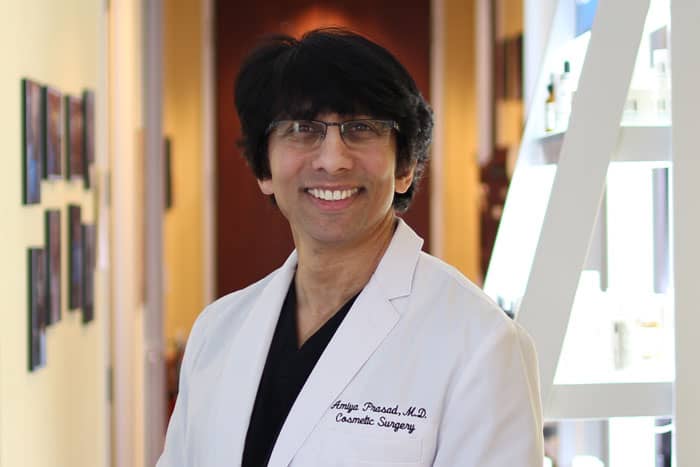Hollow Upper Eyelids: Treating the Hollowing of the Eyes
Causes and Treatment Options
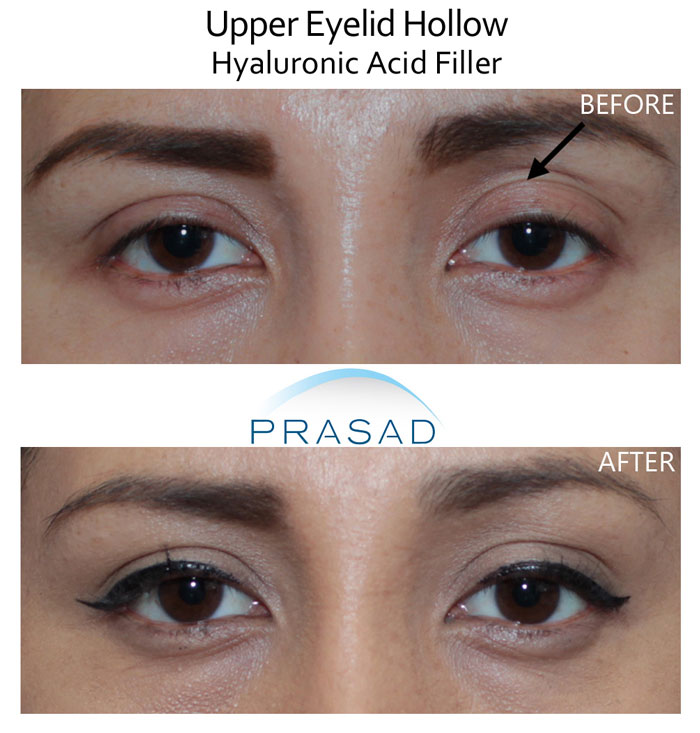
Loss of facial volume is an inevitable part of the aging process. Eyelid surgery to remove extra fat and skin, and thermal energy treatments for skin tightening can also cause volume loss. This hollow aspect can make the eyes appear tired and weary, and the eyelids may droop.I’ll explain how to correct this hollowness with a minimally invasive, non-surgical method.
My practice focuses on cosmetic eyelid procedures such as upper and lower blepharoplasty, Asian double eyelid surgery, and ptosis surgery for drooping upper eyelids. As an eyelid specialist, I also undertake revision and restoration procedures to correct eyelid surgeries performed by other surgeons. Patients come to us from all over the world.
I’ve discovered that having surgical experience with eyes, particularly complex cosmetic reconstructive surgery including grafts, and bone restoration, has influenced my approach to the use of injectable fillers. As a teaching doctor, I’ve noticed that different medical practitioners have varying levels of awareness of this complex area, and I work hard to educate colleagues so that they can prevent potential complications. Many individuals believe that fixing hollow eyes would necessitate surgery.
While surgical procedures were formerly the sole means to treat this type of hollowing, the emergence of a variety of hyaluronic acid fillers has made this area treatable non-surgically.
How to Treat Hollow Upper Eyelids without Filler
Fat grafting is one of the surgical alternatives available for hollow eyes treatment. In my experience, fat grafting has a limited use, and I do not suggest this procedure for thin lower eyelid skin. The thicker skin of the lower brow area may be appropriate for fat grafting. Fat grafts can be put below the brow and in the hollow space above the eyes, and this method has proven effective for many patients.
Patients may have concerns about fat grafting because it is a more complicated and involved operation that is likely more expensive. Fat grafting is a two-step surgery in which fat is surgically taken from another part of the body, such as the abdomen, and then processed before being surgically placed.
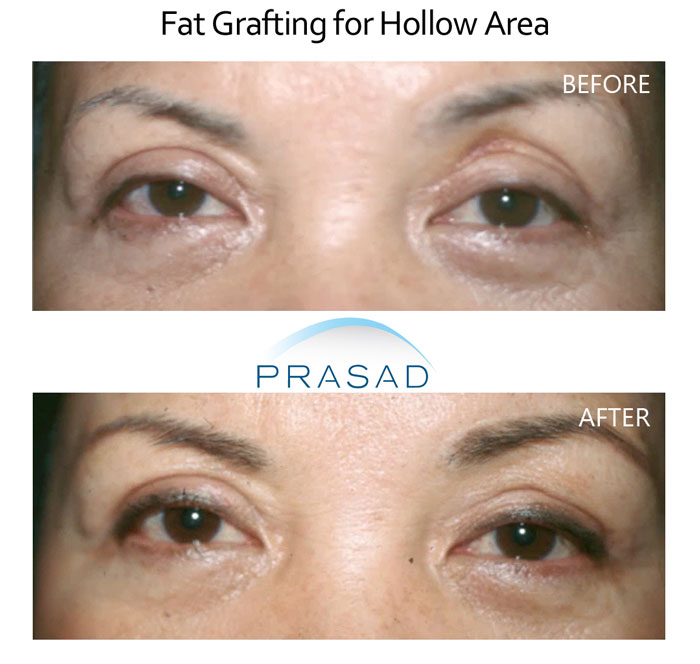
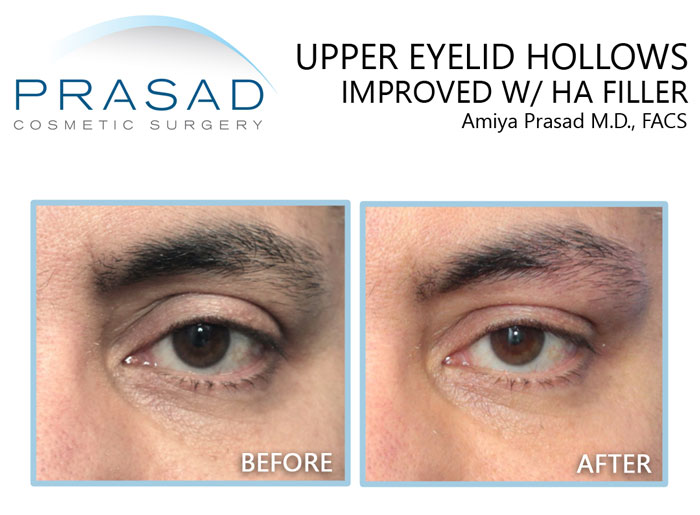
Drawbacks of this procedure is the predictability of the outcome, and the time for healing. 30-70% of fat grafted into a site may be absorbed by the body, or heal in an undesirable manner, resulting in abnormalities. I advise patients considering a fat grafting treatment to expect at least two surgeries because of quick absorption of some of the grafted fat. Significant swelling after surgery can continue for months, or even a year.
Sunken Eyes Treatment Quick Fix with Filler
In my practice, I often advocate procedures that are more convenient and predictable for the patient. This method calls for the use of a hyaluronic acid-based filler like Restylane or Juvederm.
This is when eye-related expertise and surgical experience come in handy. Each section of the area below the brow has its own anatomy, which is critical for correct filler application. For example, there is a space between the center of the brow where filler can be inserted immediately under the brow skin in such a way that the material remains stable and has a substantial impact on hollowing, brow position, and brow form. Instead of utilizing needles, I do this technique with a blunt-tipped cannula. The strategies I use often result in no bruising, and minimum swelling.
Procedure:
The hyaluronic acid filler used in this area can last anywhere from 6 months to a year (and occasionally even longer), depending on the individual. It has been my experience that fillers last longer in this area than in others, such as the lips.
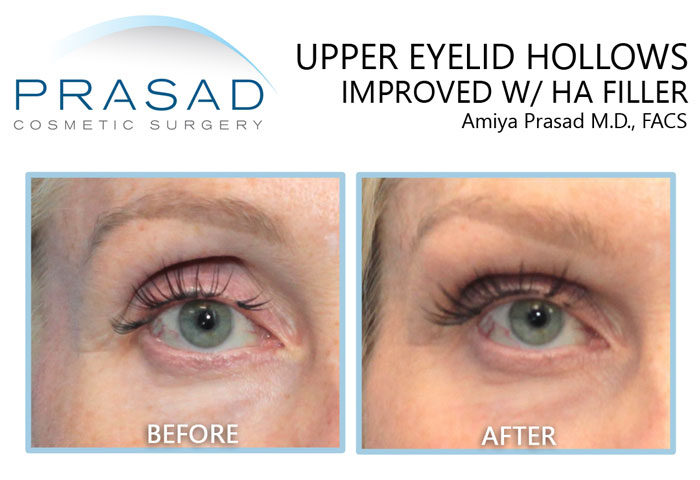
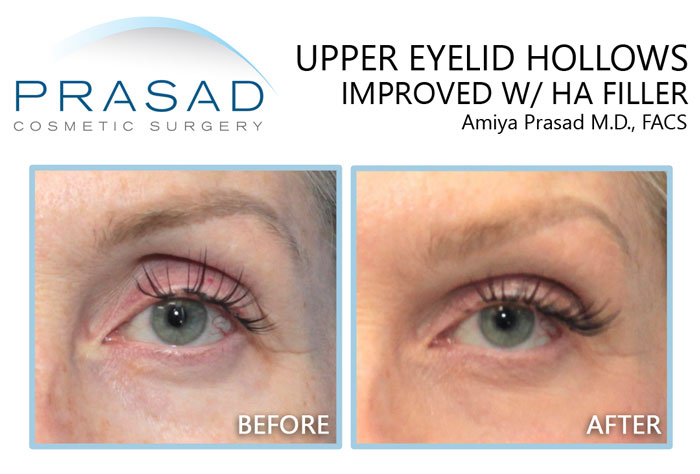
It’s critical to note that maintenance is required because hyaluronic acid fillers are safely metabolized by the body.
Recovery:
Healing and recovery are often brief, with people often returning to work immediately following the treatment. Even though I utilize cannulas to reduce bruising and swelling, some limited bruising may occur, which normally fades within a week. I see my patients for all cosmetic filler treatments after two weeks to examine how the filler has settled, and to make enhancements if needed.
Attending an event shortly after filler treatment is possible, depending on whether or not any mild bruising from the injections remain, although even this should be minor and easily concealed with makeup.
This is in contrast to fat grafting, which typically requires patients to wait at least a few weeks owing to swelling and bruising.
Results:
After filler treatment, appearance is generally stable after the two-week follow up.
Summary
Cosmetic fillers make treating brow and eyelid hollowing considerably easier and more predictable than fat grafting surgery. Patients who have filler therapy can resume their daily routine almost immediately and return for follow-up and maintenance appointments on a regular basis. Fillers are, in my opinion, the best option for upper eyelid hollowing and brow volume loss due to their simplicity and predictability.
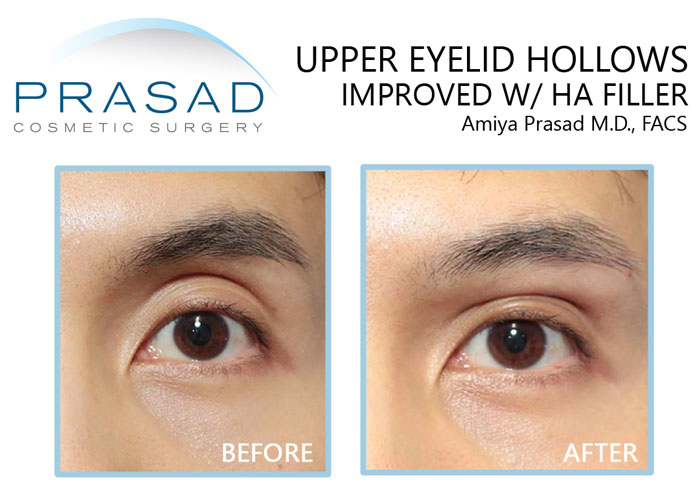
Medi-Spa Manhattan, NYC and Garden City, Long Island, New York
Dr. Amiya Prasad is a Board-certified cosmetic surgeon, and a Fellowship-trained oculoplastic surgeon. He’s been in practice in Manhattan and Long Island for over 20 years. He performs cosmetic eyelid surgeries such as upper and lower blepharoplasty, ptosis surgery, and Asian double eyelid surgery. He also performs non-surgical procedures for the eyes, including injectable filler placement, laser and radiofrequency treatments, and platelet-rich plasma treatments. To schedule a consultation, please fill out the contact form below, or you may call any of our offices at (212) 265-8877 for Manhattan, New York City; (516) 742-4636 for Garden City, Long Island; or (703) 356-1336 for Vienna, Virginia.

